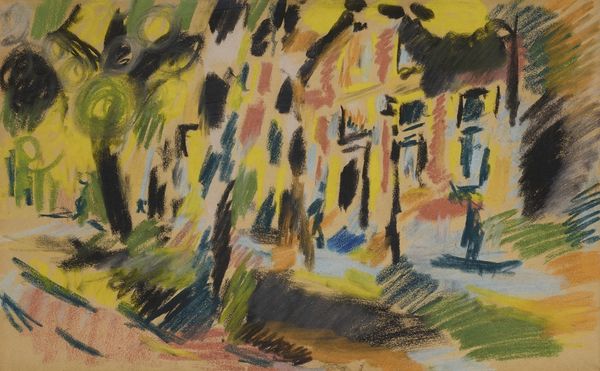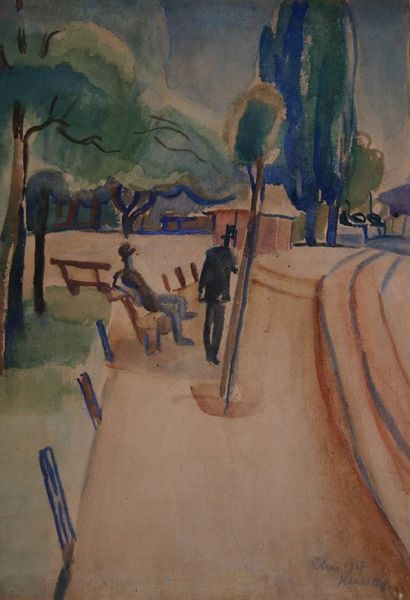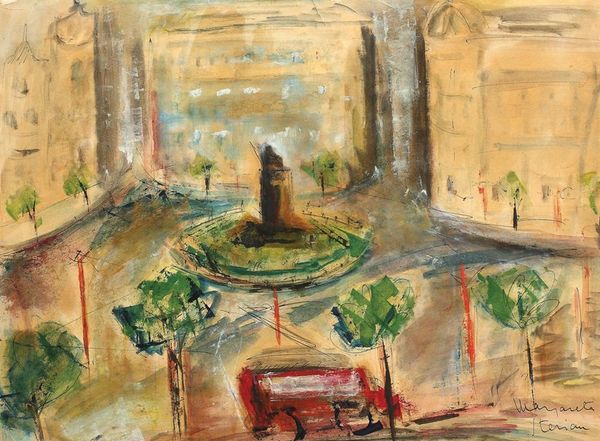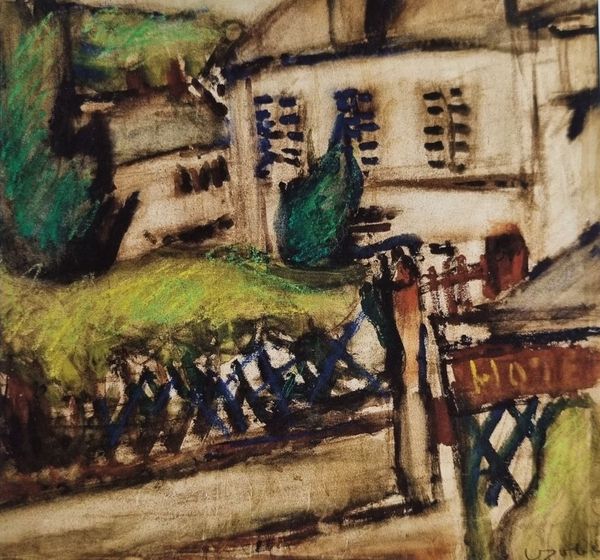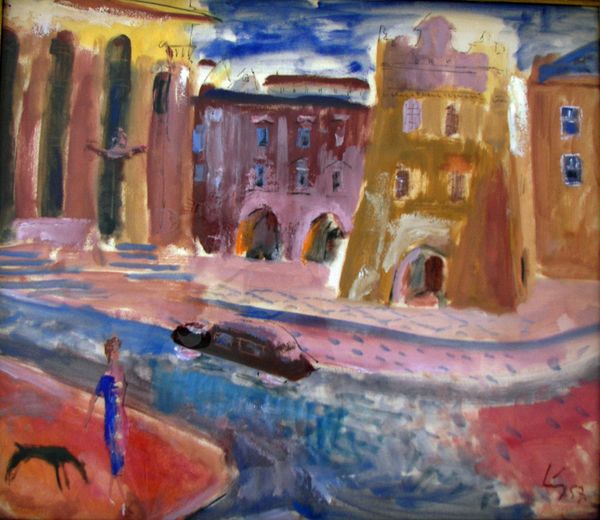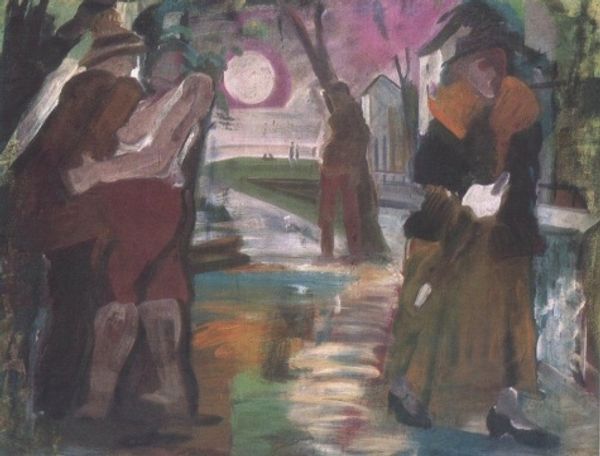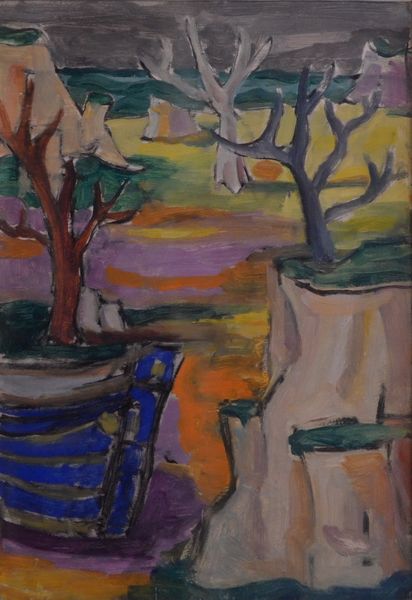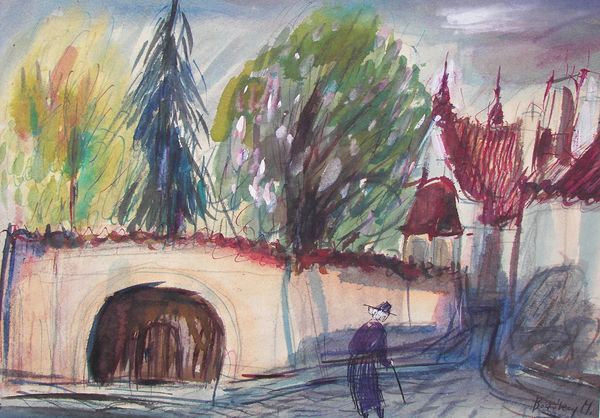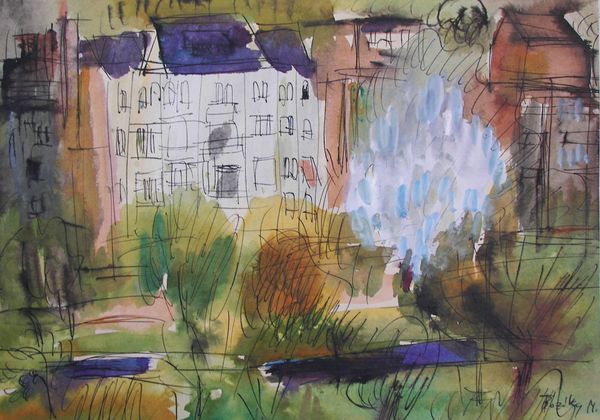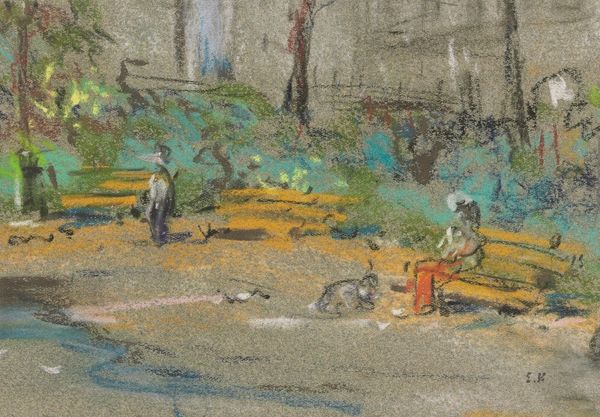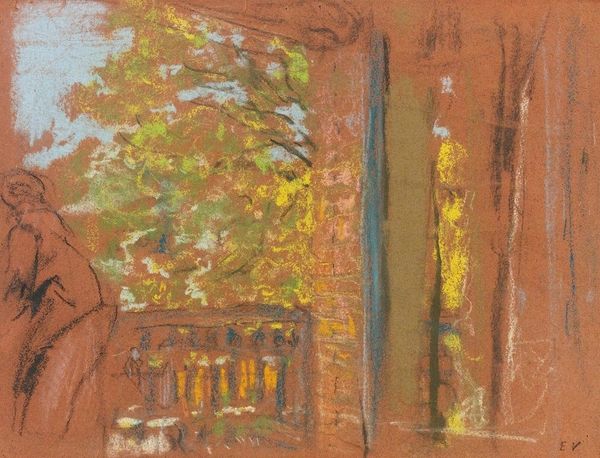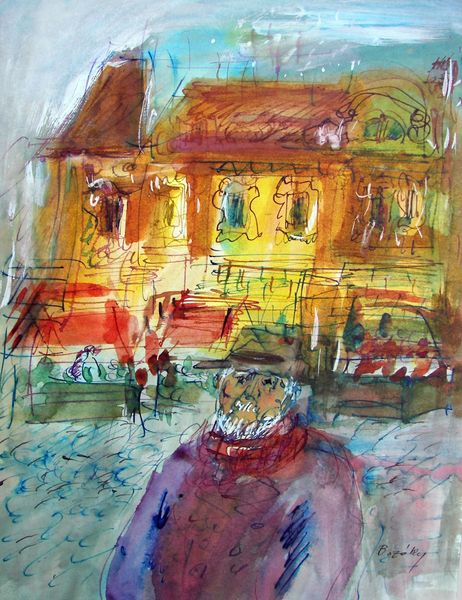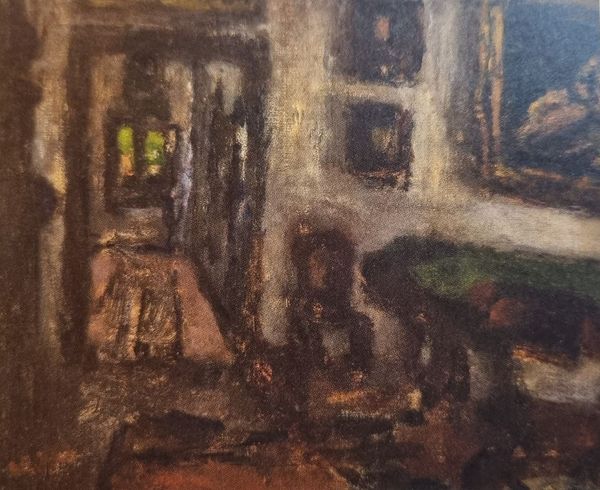
painting, oil-paint
#
narrative-art
#
painting
#
oil-paint
#
landscape
#
figuration
#
oil painting
#
painterly
#
cityscape
#
genre-painting
#
modernism
Copyright: Ligia Macovei,Fair Use
Curator: Ligia Macovei, a significant figure in Romanian modernism, painted "Landscape with Bridge" in 1940. This oil on canvas work presents a compelling scene filled with intriguing narratives. Editor: My first impression? It feels melancholic. The muted palette and the slightly obscured figures suggest a world caught between tranquility and unease. There's something about the solitary figure on the steps that feels quite poignant. Curator: Absolutely. Macovei painted this during a turbulent period in Romanian history, as World War II was intensifying, influencing art to subtly or overtly portray sociopolitical landscapes and gendered implications. The "bridge," a symbol typically associated with connection, here seems almost like a divider between the planes occupied by different members of society. Editor: Interesting that you say that because, while I agree that the bridge itself is evocative, bridges also are deeply psychological symbols. I see the architecture suggesting transition and access, particularly given the shadowy figure ascending, almost pulled towards some kind of resolution or understanding—the lights perhaps guiding one towards their journey to something different. Curator: That is insightful! Considering her feminist leanings, Macovei's construction could also depict the gendered constraints within public space at the time; perhaps these lights guiding the figure are guiding towards gender norms instead of self discovery. Notice how all the figures appear to be obscured in terms of features. We cannot deduce class or status based on visuals alone here, which points to the artist critiquing social constructs. Editor: True, yet that ambiguity, to me, emphasizes universality. Even in what could be assumed to be a portrait of oppression there is opportunity for any viewer to see themselves reflected in one or more characters. It could symbolize collective displacement or simply, human migration patterns in both a personal and cultural sense. Curator: These contrasting notions just highlight how deeply rooted and powerful images from the past can engage with current critical concerns, which are crucial to recognize. It speaks to how effectively her commentary of these concerns transcends decades, isn’t it. Editor: Indeed, it demonstrates the timelessness of these reflections within artistic expression, where imagery becomes its own complex language beyond mere representation.
Comments
No comments
Be the first to comment and join the conversation on the ultimate creative platform.
